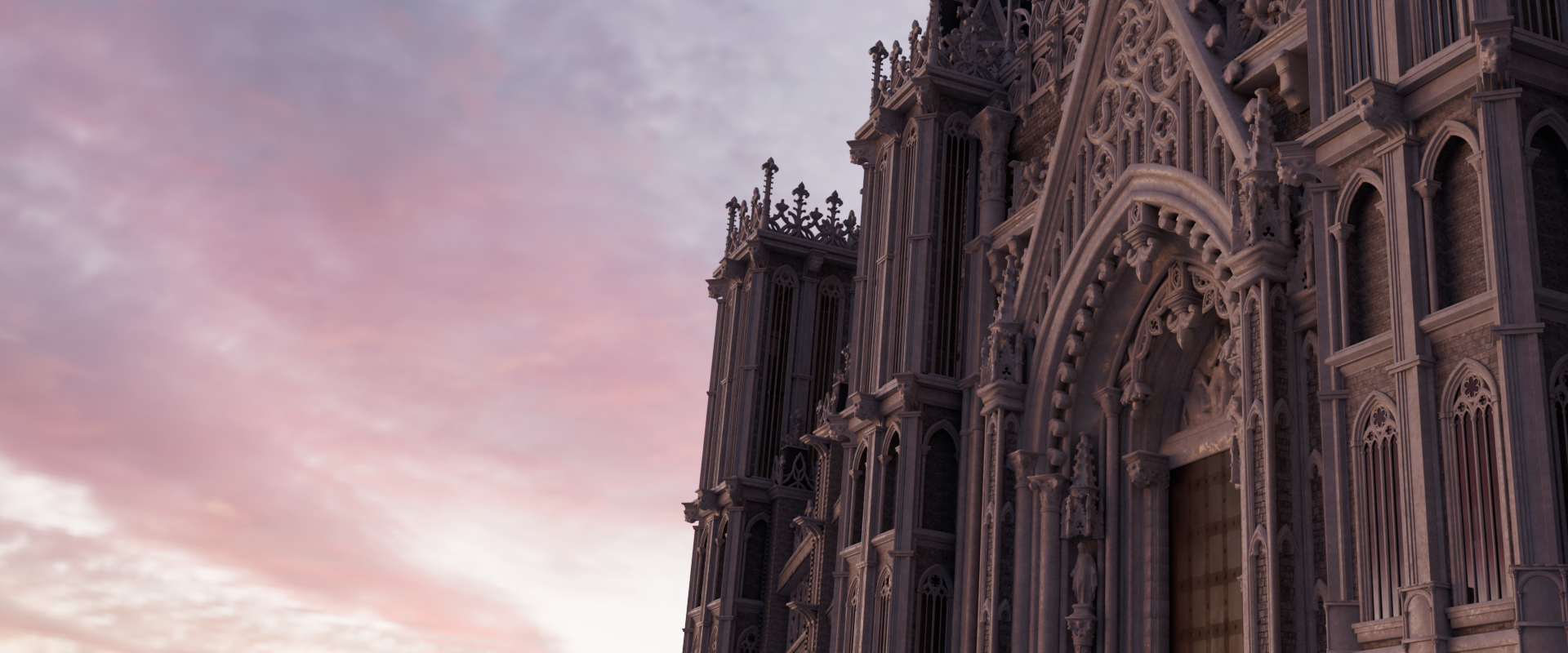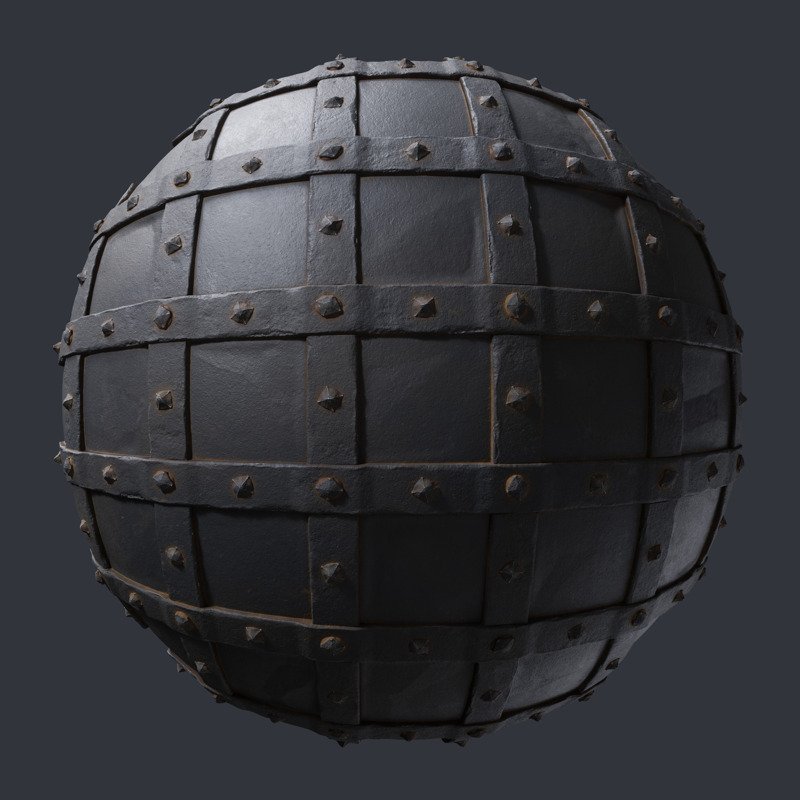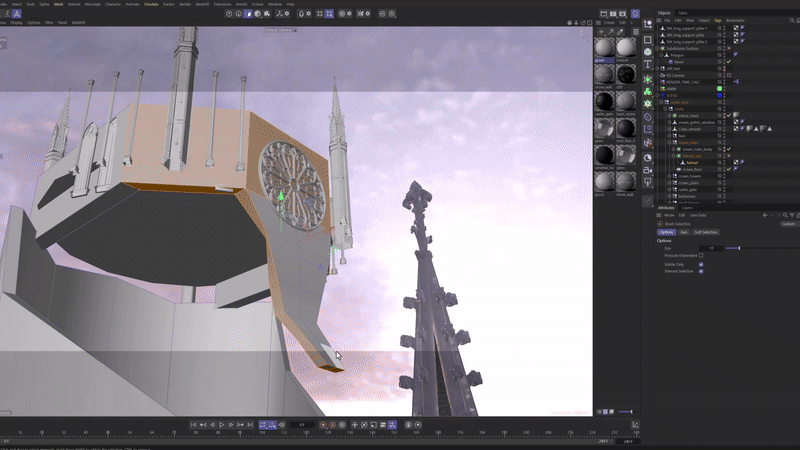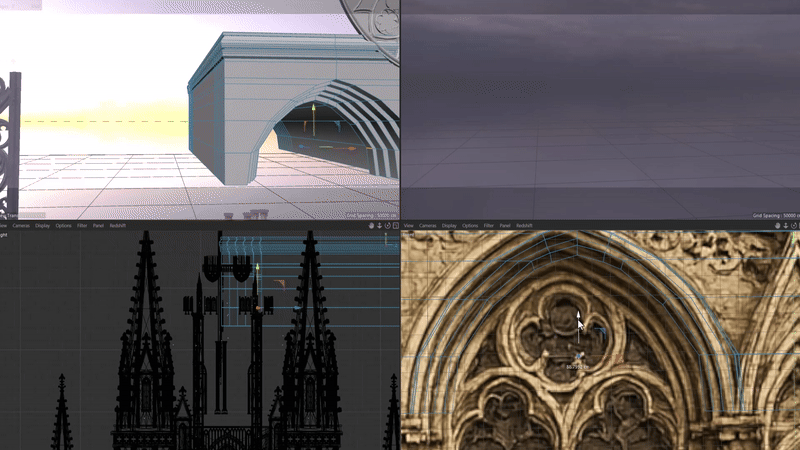
SANCTUM
Emotional
Complex
Enduring
A motion design final project that shows a clear and sophisticated sequence of events that are engaging to watch.
concept
design
animation
STYLE EXPLORATIONS
01
Illustration Alternative
This experiment was an exploration of digital illustration. After many brush experimentations before landing on the combination of rough brushes, there were many iterations of oil brushes, pencils, or even gouache paintbrushes. I started with a rough sketch, blocked out my colors, and with the lights, I carved each element. Then, in After Effects, I was able to do a mixture of rough edges as well as posterized time to complement the rough, painterly style.
02
04
Shader Alternative
After experimenting with the digital illustrative style, I wanted to attempt something that was cleaner but still abstracted nature in a memorable way. The final product—after a rough sketch of getting all the pieces to work together within the composition—was made in Photoshop with flat colors and a consistent line weight across the edges. In After Effects, I added the breeze in the grass, the floating of the rocks, and the small glows that happen here or there.
03
3D Alternative
When doing this 3D experiment, I was able to test what texture my statues would take on. This result was made using a subtle concrete texture, adding dirt in the roughness of the 3D material, and using a clever subdivision and Voronoi fracture technique to get the cracks. It was also helpful in learning how to find and texture the right assets for this kind of project. As well as experimenting with how to create and animate grass using Redshift and Cinema 4D.
Pixel-Art Alternative
This was a quick exploration of how to make statues using pixel art. I had to practice for about two days, but then I was able to figure out how I could create pixel art. I ended up using a low-resolution image and upscaling it inside of Photoshop. Textures were created with low-res images or were painted in, as the low resolution caused most brushes to pixelate at such a scale.
CONCEPT
01
The Sanctum
With each tamed emotion, his crown grows heavier, but his true battle is the silent war within.
This piece is an exploration of one’s emotional keep. It is designed into four distinct sections that look to serve as representations of our struggles waged in silence. Each statue is a mental translation of concepts echoing the Four-Horsemen: Famine, War, Conquest, and Death. This piece is an exploration of one’s emotional keep. It is designed into four distinct sections that look to serve as representations of our struggles waged in silence. Each statue is a mental translation of concepts echoing the Four-Horsemen: Famine, War, Conquest, and Death.
02
Pre-Production (Animatic)
Pre-production was a struggle for this project. It is a complex megastructure that had to be designed to be understood by an audience - while trying to not be too long in process. An enduring effort. Most of the pre-production process focused on how each environment expresses one word: balance, duality, hope, and expectation. This was a lot to pack into even a two-minute scenario but not impossible. With the idea of each environment put together, I moved into the production process.
CINEMA4D
Modeling + Kitbashing
This piece was a sophisticated piece that required a lot of individual modeling of parts, as well as kit bashing from other sources in order to get a finished project that could attempt to capture the near-monolithic presence that this piece aimed toward. I specifically took part in modeling structures and environment pieces that were not so easily accessible but possible by the process of box-modeling out the parts, then beveling or sub-diving the models into a manageable mesh.
Models from CGTrader included.
Lighting Rigs
Lighting large structures in 3D in environment was a struggle. It was not as simple as using an HDRi, as I am planning each individual shot rather than an open-world experience. Redshift area lights, as well was dome light features were used to light each scene in a cast-lighting manner that would serve as the visual atmosphere for this piece in order to convey that each environment was a part to a whole.
Materials
All texturing was done using with PBR materials inside of the Redshift Render Engine. I used and organized various node trees to make sure each PBR material was properly mapped to the plane it was projected to which proved to be a challenge: a lot of parts were scaled differently in order to create the castle structures in a way that was not flat; many of which was problem-solved to make sure no part was too bigger than the other-for example the consistency of the brick texture/roofing-to create a consistent texture choices throughout. In exchange for a smoother workflow, I had to make a lot of individual selections to texture the various parts of the castle; however, this made it easy to swap or remove textures on a individual or critique basis. Many of the PBR textures were real-life scans in order to achieve a semi-realistic state.
VISUAL REFERENCE
Atmosphere Reference
Heavily leans on its gothic architectural foundations in order to create a specific tone for its atmosphere. Specifically, distinguishing between a sorrowful atmosphere or hopeful atmosphere was a decision that had to be made, but a sorrowful one would leave a bad taste in the mouth of the audience. The piece aims to have a more hopefully lit atmosphere that exalts the statues and its environment a manner that remains a sort of gothic daylight.
Gothic studio-style reference used to help stylize the project.
Colors
Stone, Vegetation, Earth.
There was no specific color palette for this piece, rather its decisions were made based on reference in order to choose how parts were colored to be accurate to real-world structure of vegetation. Lots of color distinctions were made to make sure each was appropriate to contributing toward the piece’s realistic workflow.
Plenty of color correction was done to emulate a some level of reality. Led to abstracting textures that were not necessarily what they appear in the render but meant for different purposes entirely.
TECHNICAL PROCESS
CINEMA 4D
Modeling
Modeling was a long process as gothic architecture has many small parts and details. In order to achieve a semi-realistic render, the thought process of the models had to be simplified process that looked to simplify complicated structures: box-modeling into beveling or sub-diving the models to get more detail out of them.
Texturing
One of the most time-consuming factors to render-times is organic models; in order to replicate them, I had to use clever ways to have marginally less-dense meshes but still retain realistic qualities. In the case of the cliffs, I used two selections: one, would distinguish the top portion where grass and other ground effects could go; and two, was a the rocky cliff sections along the side. Using deformers like Cinema 4D’s displacer, I was able to use a combination of manipulating the mesh and the displacement of PBR materials to make a simple but effective process.
Redshift
My choice of PBR materials made this a minor learning curve but I was able to get assistance and learn how to work with these further. With Redshift, I was able to alter the displacement properties of my materials in the override options by making the necessary components RS objects. The catch was, getting each bump/displacement map to project onto the mesh properly: this required a lot of setting changes to make sure the correct math was going into the mapping of these materials.
Animation
This plays into why so many parts of the model had to be remapped for some individual pieces in order to ensure a consistent scale in the projections.
Animation SFX
When designing the worlds, I tried to conceptualize ideas that could be done with various tags and deformers in Cinema 4D. Since each environment had distinct parts requiring modeling or set up, the animation had to be simplified in some parts of these renders but remain intact enough to tell the narrative. Fake simulations were utilized to create semi-realistic renders for properties that were more dependent on advanced programs.
The sound effects were specifically stylized with the help of Kelly Warner, the on-site sound designer for our motion design department. Finding ways practical and abstract to create an immersive sound experience. I met with Kelly over many meetings all the way from the beginning stages of this project in order to create a musical score that would set the pace for sequencing of each render




















